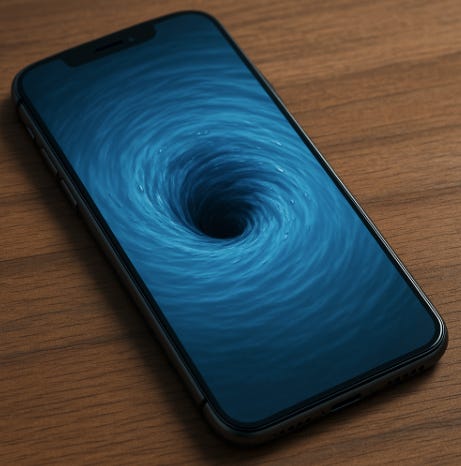The Vet Vault 3.2.1.
'Fake' Low Platelet Counts, Rethinking Schiff-Sherrington, and Is That Effusion Bacterial or Not?
The two Freddies. That was taken at the fancy dress party at Vets On Tour 2023. The theme was 80’s rock star, and me and Dave are obviously both Queen fans. But my version of Mr Mercury wasn’t well chosen… a short leather skirt and slippers on a ski trip is a foolish choice! Our theme for party night at Wanaka 2025 is Heroes and Villains. I haven’t decided on an outfit, but whatever it is - my villain will definitely be someone who wears pants.
When we say that our conferences are fun we mean it. Come and see for yourself.
3 Clinical Pearls.
1. Low Platelet Counts That Are Actually Normal
From Episode 188 in the Medicine Feed - With Dr Ninette Keller
A few weeks ago we talked about platelet counts in terms of when we should start worrying about spontaneous bleeding. But its also worth highlighting a few situations, other than clumping, where your CBC machine will give you a fake low count:
You’re probably aware that Cavaliers often have a congenital macrothrombocytopenia, which means that they have very large but fully functional platelets.
Your machine will count these giants as red cells, so it will tell you that there are pretty much NO platelets.
However, you’ll find those big platelets easily on a blood smear. Still not a lot of them, but that’s ok, because one of these large platelets is functionally equivalent to 10 normal platelets. Which is why cavies don’t make a habit of spontaneously bleeding.
What I DIDN’T know was that those funky platelet genes are usually carried over to Cavoodles. (So not only do we now have anxious cavies, we also have -oodles with weird platelets!)
The other thing I didn’t know was that cats also have larger platelets, so you’ll have the same issue to a lesser extent.
In addition to that - cat platelets are also way more sensitive, so they clump a lot quicker when you don’t have a clean-stick blood collection, which is kinda always, right?
Those two things combined means that your in-house machines will nearly always get you a false low platelet reading in cats.
(Did I mention yet that we should be making blood smears?)
2. Rethink Schiff-Sherrington Syndrome
From Episode 188 in the Surgery Feed - With Dr Fred Wininger
You know about Schiff-Sherrington, right? Dog gets a spinal injury at T3–L3, but instead of normal front legs and wonky back legs your patient is floppy in the back but with stiff front legs. Neurologist Dr Wininger gave us a recap and a very important message about it in our episode about acute spinal issues:
Shiff-Sherrington happens because of a disruption of the border cells in the lower lumbar spine. These cells regulate communication along the spine by sending inhibitory signals to the forelimb extensor muscles, basically telling the front legs to chill out.
But here’s the important bit: Dr Fred says, unlike what most of us were taught - the presence of Schiff-Sherrington syndrome is NOT a prognostic indicator.
“People see that and they freak out. But the thing I would share with your audience that's most important is this: a lot of criticalists and emergency doctors see Schiff-Sherrington syndrome, and they say to themselves: ‘man, that dog is not gonna recover.’ But it's really important to remember that it is not a prognostic indicator. So important. It has nothing to do with outcome. “
3. Is That Effusion Bacterial or Not?
With Dr Claire Sharp from the Advanced Surgery Podcast
Your patient has an effusion. You REALLY need to know if it’s bacterial, because if it is you should probably cut it. So you do smears, you check effusion glucose and lactate. You’re still not sure. So you look at your smear again, and you start to convince yourself that those little dots are probably-maybe-possibly bacteria. In this phenomenal episode on peritonitis ECC legend Dr Claire gave us her pro tips for making that call:
“ Misdiagnosing bacteria in neutrophils is a huge problem. And so we really need to optimise our chances of a successful diagnosis…”
Centrifuge your sample at urine sediment speeds—less forceful than a PCV spin. Pour off the supernatant, then re-suspend the pellet in a small amount of fluid using a pipette.
Prepare a squash smear from the concentrated sediment and stain it with Diff-Quick.
“By doing that, you get a lot rid of a lot of the crap in the background of your preparation. And that's one thing that confuses people and makes them think that there are extracellular bacteria.”
Look for true intracellular bacteria within phagolysosomes—oval-shaped structures in the cytoplasm with a clear halo that doesn’t take up stain like surrounding cytoplasm.
‘The key for what you are looking at in the cytoplasm of these cells to really feel confident that there are true intracellular bacteria is identifying not just the basophilic things in the cytoplasm, because they could be remnants of the neutrophil, they could be Jolly bodies, et cetera. You're looking for a phagolysosome.’
Use oil immersion (1000x) magnification to confirm detail and diagnostic confidence.
Give yourself time—set a timer for 10 minutes to scan thoroughly. (If you haven’t found it in 10 minutes it’s probably not there.)
Ask a friend! If you’re not sure, discuss findings with a colleague—differentiating debris from real phagocytosed bacteria is critical for accurate diagnosis.
(And no, Dr Claire doesn’t trust glucose or lactate levels in the effusion to help her make the call. Have a listen to the episode for the details on why. You have to SEE the bacteria.)
2 Other things
“I am not a thing in the world; I am the space in which the world is happening.”
Richard Lang
“Mind: I gotta do this thing.
Body: No. You did a thing yesterday; that's enough things.”
Internet meme by Poetry of monsters
1 Thing to think about.
“I don’t have time.” You’ve said it. I’ve said it. But how true is it, really?
I’m becoming increasingly aware of how easy it is to mindlessly squander time. I specify mindlessly, because I’m all for purposefully squandering time—staring at the clouds while picking fluff from your belly button—if that’s what you’ve chosen to do. It’s the bits of time that are unthinkingly misplaced, or strategically stolen from me, that I’m starting to tally up with a growing sense of alarm. Like spare change spent on snacks or lost in the couch, it doesn’t feel significant until you suddenly notice an inexplicable $5000 hole in your budget. Except much more important.
So here’s a new way I’m trying to think about my own time:
I reckon twenty minutes is kind of the minimum viable useful unit of time. In 20 minutes you can:
Finish a full consult.
Deal with three to five emails.
Do the dishes.
Read a chapter of a good book.
Run around the block.
Do the school run.
Squeeze in a mini yoga or a solid meditation session.
Or have a nap long enough to significantly improve the rest of your day.
But it’s also frighteningly easy to accidentally waste 20 minutes. Here are some less-than-useful ways I’ve caught myself spending 20-minute blocks in the past week:
Making tea—not because I want tea, but because I’m procrastinating.
Looking for my phone.
Hunting for grey hairs. (Futile!)
Ruminating about a slight disagreement I had with a friend.
Try to hit a bullseye on the dartboard in the shed (again with the procrastination!).
Just this morning it took me 16 minutes after my alarm went off to actually get out of bed. Not sleeping—just thinking about getting out of bed.
And my phone… let’s not go there.
So my new strategy to avoid time-toilets like these is to visualise this picture every time I’m in transition between two activities—and definitely every time I pick up my phone:
Those are the 20-minute blocks you have to spend in a day. There are 72 of them.
The shaded 24 blocks are spent on sleep, leaving me with a balance of 48 useful units of time - the white blocks - on any given day. Let’s call them UUTs.
Work will eat up a large chunk of those white blocks. For many of us, most of our remaining UUTs get sucked into that insatiable free-time black hole we call children. Which leaves you with only a handful of useful units for “discretionary spending”, to borrow from the world of finance.
Which is why it’s so very important to be strategic with how you budget for those precious few remaining units. Im trying to keep these two strategies in mind:
Allocate them ahead of time. Spend them before you have them—like shunting money from your paycheque straight into the mortgage before you can be tempted to spend it on new shoes. Make a commitment. Book it, and block it in the calendar.
And yes, the biggie—beware the biggest time-toilet of all:
How easy is it to flush away 20 minutes on Youtube shorts or a good old fashioned FB doom scroll?
“I don’t have time”. Really? Ask yourself:
Why is it true?
How am I responsible for that fact?
Where can I recuperate 2 or 3 extra UUTs?
Much love,
H
P.S. If you really want to freak yourself out, do the maths to work out how many UUTs you have left until you die. Even if you’re optimistic and aiming for 90, it’s a number that’s bound to get you off the couch!
How to connect with us:
Listen
Learn
Connect
If you are finding these emails useful - do us a favour and forward it to a friend who you think would like it too.
And if you are that friend who had this forwarded to them and you want to get more of these emails, then …








